|
Here are some very important things you can do to stay safe during your visit: 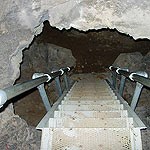
Caving: Long pants, long sleeves, and closed-toed shoes or boots are a must for all caves. Temperatures in the caves average 55 degrees Fahrenheit all year. Three flashlights per group is a bare minimum, in case of dead bulbs or batteries, and everyone in your group needs their own. Flashlights can be borrowed from the visitor center, but must be returned each afternoon. Always let someone know where you are going and when you will return when caving. We highly recommend a helmet to protect your head; bicycle helmets work fine, and we sell inexpensive "bumphats" in the visitor center. We also recommend sturdy gloves and kneepads if you plan to visit more difficult caves, as you can expect to crawl on jagged lava. Maps of the inside of the developed caves are also available for sale in the visitor center, and are highly recommended for the more difficult, more complicated caves. 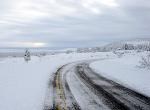
Winter Weather: During cooler months, be sure to bring gloves, a warm hat, and be prepared for sudden shifts in the weather. What might seem like a pleasant fall day can quickly become a blizzard, so be prepared for the worst just in case. Waterproof boots are a must for navigating through snow at cave entrances. 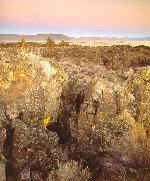
Summer Weather: Intense sunlight and warm temperatures require plenty of sunscreen, brimmed hats, and a lot of water to drink. In fact, we recommend consuming up to a gallon of water per person, per day! And remember, sweet sports drinks and sodas can do more harm than good in hot weather, they can actually cause cramping and serious medical problems. It's safer to drink water, or water mixed with a small amount of a sports drink for flavor. 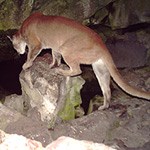
Mountain Lions: Stealthy and elusive, this is mountain lion territory. Always accompany small children and avoid traveling alone in the backcountry, especially if you are of small stature. Be especially wary at dawn and dusk, when lions are most active. If you do encounter a lion that seems curious about you, shout, throw rocks, and make yourself look as big and mean as possible. Do not run away, and contact help if the lion is not scared off. 
Rattlesnakes: One venomous snake, the western rattlesnake (Crotalus oreganus), finds valuable habitat in the park. While exploring the lava beds, never place a hand in a space where you cannot see it and be sure to watch where you step. If you do encounter a rattlesnake, heed its warning buzz and back away calmly. 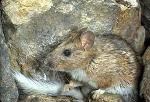
Diseases: There are several rare but serious infections that can be transmitted by the wild animals who make Lava Beds their homes. If you follow park policy of keeping your distance from wild animals and their homes, you will not only ensure they stay wild, but you will protect yourself from disease and injury. Please take extra caution to avoid rodent nests and burrows. Plague is a rare but serious disease that humans can contract from infected rodents or their fleas. Plague is most commonly transmitted by the bite of an infected flea. Occasionally, it is transmitted through contact with tissues from an infected animal, or rarely through contact with infectious respiratory droplets, from coughing or sneezing. Domestic cats and sometimes dogs are susceptible to plague infection and can transmit the disease to their owners if not treated promptly. Plague is widespread in much of California, including in the Sierra Nevada mountains and foothills. In a typical year, the Centers for Disease Control and Prevention (CDC) reports about ten cases of plague in humans per year in the western United States. |
Last updated: January 28, 2024
